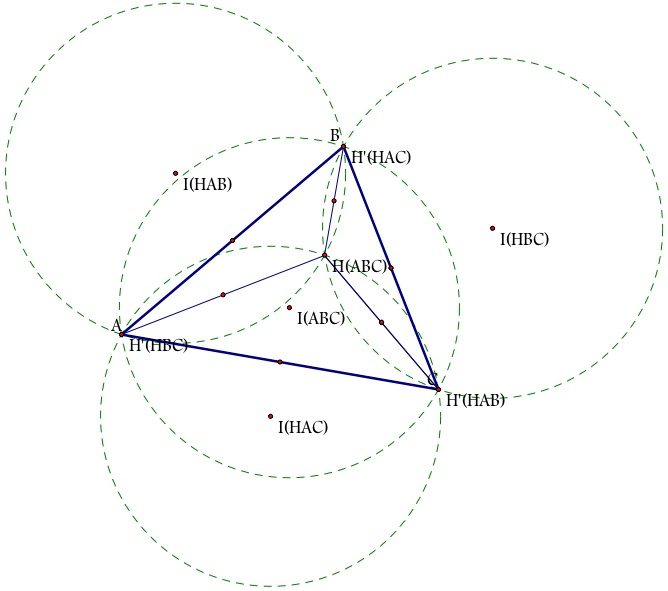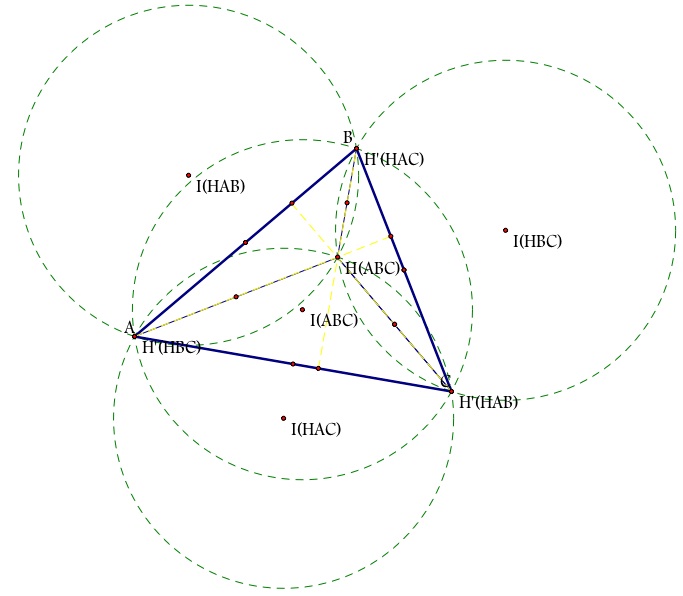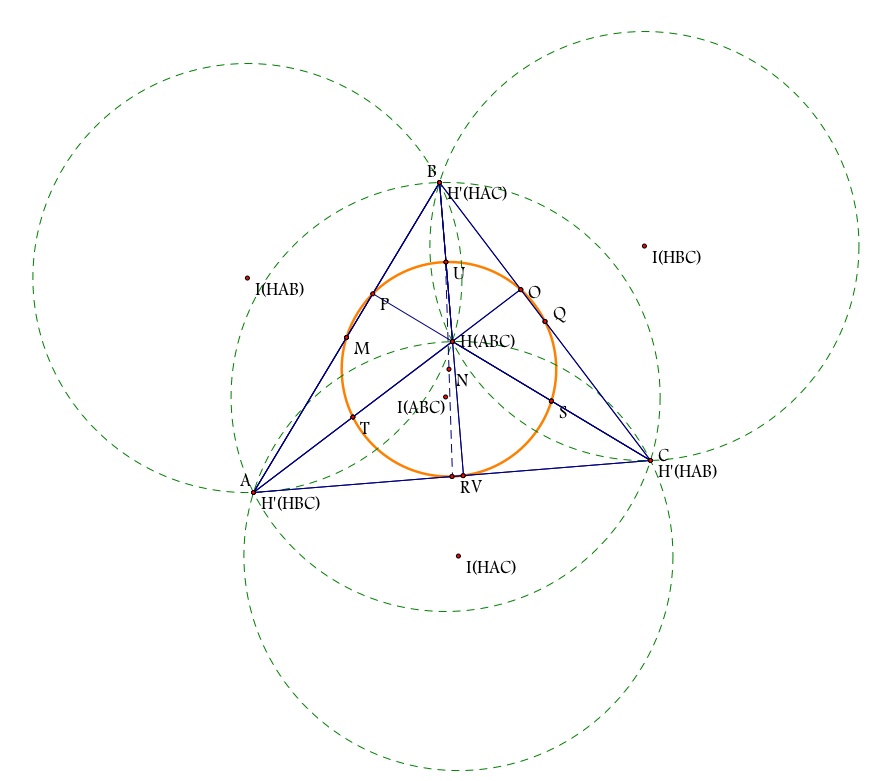
Assignment 8:
Altitudes and Orthocenters
by
Kristina Little

Assignment 8:
Altitudes and Orthocenters
by
Kristina Little
We have constructed the orthocenter of a triangle before. And in Assignment 5, we were able to build a script tool to create this geometric construction. Follow the steps below to create your own triangle ABC with orthocenter H. Then relate what you see in terms of the different triangles.
1. Construct any triangle ABC.
2. Construct the Orthocenter H of triangle ABC.
3. Construct the Orthocenter of triangle HBC.
4. Construct the Orthocenter of triangle HAB.
5. Construct the Orthocenter of triangle HAC.
6. Construct the Circumcircles of triangles ABC, HBC, HAB, and HAC.
Your picture should be similar to the one below, except for differences among triangles.

Where are the orthocenters of triangles HBC, HAB, and HAC? Did you notice how when you were forming the orthocenters of these triangles that are a part of triangle ABC that the orthocenter of a specific partial triangle, say HBC, is actually the vertex of triangle ABC not included in this partial triangle, comparatively point A. This holds true for all 3 partial triangles.
Take particular note of the mid-points that are marked on all the partial triangles. Do these seem to have any correlation to one another? If so, what kind of correlation?
In fact these points do in fact all relate to one another. Together they form a circle that is specifically related to triangle ABC. The special circle is called the nine point circle. A nine point circle is named for the nine significant points that it passes through in relation to any triangle. These point are:
1. The midpoints of all 3 sides of the triangle (3 points).
2. The foot of each altitude of the triangle (3 points).
3. The midpoint of each altitude from vertex to the orthocenter (3 points).
Examine the figure you created at the beginning again. Do you see the nine points on our figure? Which points are missing? On our figure above, we have criteria (1) and (3). These points were given to us as we created the circumcircles of the partial triangles. To create criteria (2) we simply need to go back and redraw our altitudes for triangle ABC to find the foot of each altitude.

Now we have all nine points to create our nine point circle.

So now we have the case of our nine point circle for any acute triangle.
What if we were to let triangle ABC be a right triangle? Or obtuse triangle?
If triangle ABC were a right triangle. Our orthocenter H would lie on one of the vertices. The vertex that H would lie on would be determined by which angle was the right angle. When this occurs we would also have our nine points degenerate into 3. Does this statement seem plausible?
GSP File to Watch the Triangle Transform into a Right Triangle.
You should notice after watching the file a few times and playing with the movements yourself, that the orthocenter of triangle ABC becomes the vertex B as Point C moves onto the perpendicular line that runs through B. This also means that orthocenter of triangle ABC is overlapped with the orthocenter of triangle HAC.
Our midpoints also conform until we only have three points visible around the entire triangle.
GSP File to Watch the Triangle Transform into an Obtuse Triangle.
Watch how the orthocenter moves to where it hits the vertex of B (as we saw in the previous example) but then as Point C continues to move the orthocenter actually falls outside of the triangle. A phenomenon we may not have predicted, is that even with the orthocenter falling outside of the triangle, our 9 points that we need to make up the nine point circle still form a nine point circle.
Continue to explore different triangles and the nine point circle. The conjecture is that this special circle holds for all triangles. Do the constructions with GSP support this?
Assignment 9: Peddling Pedal Triangles